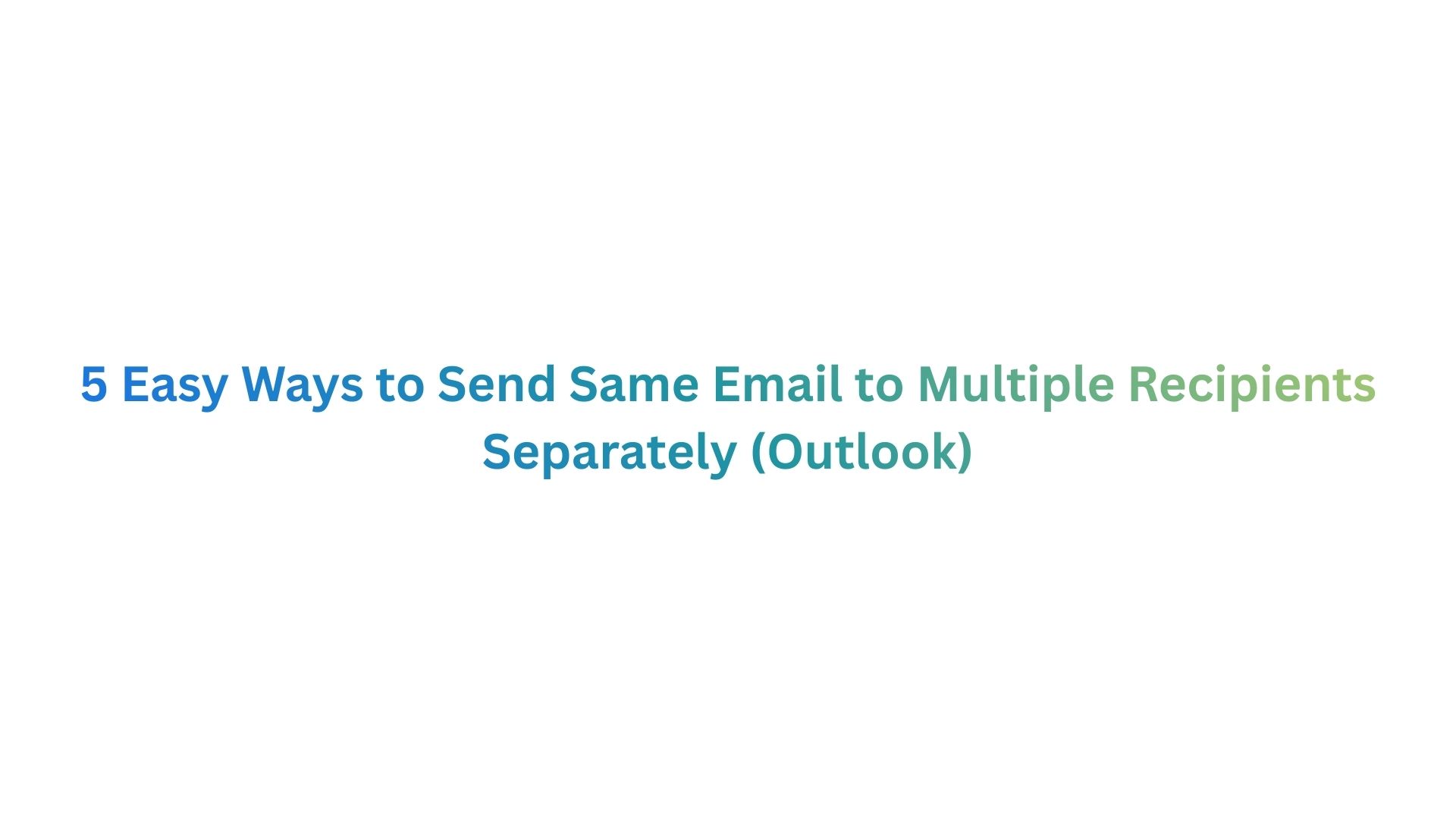Effective email communication is more than just sending information; it's about engaging and influencing your audience successfully. Whether in a professional or personal context, the way you communicate via email can significantly impact your relationships and objectives.
In the professional sphere, effective email communication is key to achieving goals, building networks, and driving results. It enables you to present your ideas persuasively, fostering collaboration and understanding. In personal scenarios, it helps in maintaining strong connections through clear and respectful dialogue.
This blog will guide you on how to use email not just to convey messages, but to engage your readers and influence their perspectives or actions. By mastering this skill, you enhance your ability to communicate effectively, leaving a lasting impression on your recipients.
How to Write an Effective Email: Easy Steps

An email is considered effective when it clearly conveys its intended message, prompts the desired response from the recipient, and achieves its purpose efficiently.
To help you craft emails that get read and elicit the desired action, here are the easy steps to write an effective email
Craft a Compelling Subject Line
Your subject line is your first impression. Make it count. It should be precise yet catchy, giving the recipient a clear idea of the email's content.
Think of it as a headline that entices the reader to open the email.
Examples:
Subject Line: Request for Meeting: Discussing Partnership Opportunities
Subject Line: Weekly Update: Team Progress and Next Steps
Subject Line: Exciting Opportunity: Join Our Team for a Special Project!
Give a Personal Touch
Address the recipient by name. This simple act creates a connection and shows that the email isn’t just a part of a mass mailing.
Examples:
Personal Touch: Instead of a generic "Dear Sir/Madam," use the recipient's name: "Hi [Name]," or "Dear [Name],"
Personal Touch: Mention a previous meeting or conversation: "It was great meeting you at [event] last week," or "I enjoyed our conversation about [topic]."
Personal Touch: Acknowledge their work or contribution: "I really appreciated your insights on [topic]" or "Thank you for your help with [project]."
Make a Concise Content and Tone
The core of an effective email lies in its clarity, structure, and tone.
Begin with a clear, concise introduction to quickly convey your purpose.
Structure your content with short paragraphs or bullet points for easy digestion and engagement.
Tailor the tone to your audience: formal for professional contexts, conversational for informal ones.
This approach ensures your message is both impactful and well-received
Examples:
Email1 :

Email2 :

Email3 :

Set a Clear Call to Action
What do you want the recipient to do after reading your email?
Make this clear.
Whether it’s to set up a meeting, provide feedback, or take some action, your call to action should be direct and unambiguous.
Examples:
Call to Action: Please provide your feedback on the attached project outline by EOD Friday
Call to Action: Could you confirm your availability for a meeting next week? Please choose a suitable time slot from the options in the attached poll.
Call to Action: Register for the webinar by clicking this link. Spaces are limited, so please sign up soon
Proofread Before Sending
Grammatical errors or typos can undermine your credibility.
A quick proofread can save you from embarrassment and miscommunication.
Example:

Close on a Courteous Note
Your closing should be as thoughtful as your opening.
A respectful sign-off can leave a positive lasting impression.
Examples:
Closing Note:
Best regards, [Your Name]
- Sincerely, [Your Name]
- Respectfully, [Your Name]
- Happy to help if you have any further questions, [Your Name]
- Let me know if you need any additional information, [Your Name]
- Thanks again for your time, [Your Name]
- Gratefully, [Your Name]
Follow-Up if Necessary
If you don't receive a response, a polite follow-up email can remind the recipient of your previous communication and prompt a reply.
Example:
Follow-up Email:

How 'Write Like You Talk' Makes Emails More Effective
The 'Write Like You Talk' approach to email composition emphasizes a conversational tone, striving to mirror natural speech patterns. This strategy tends to make emails feel more personal, genuine, and engaging, which can be very effective for several reasons:
Natural Tone: When your emails sound like conversation, they are less formal and more authentic, putting recipients at ease.
Clarity: Conversational emails typically get straight to the point with simple language, reducing the chance of misunderstandings.
Personal Connection: This style can make the reader feel as though they are in a direct dialogue with you, which can be quite persuasive.
Engagement: A conversational tone often holds the reader's attention better, encouraging them to read the entire message and respond.
For example:

Example of Engaging and Influential Email: Key Elements

- Strong Subject Line: The subject "Enhancing Our Team's Performance Through Innovative Strategies" is compelling and sets clear expectations for the content of the email.
- Personal Greeting: The email opens with "Dear Team," which is a direct and inclusive way to address the recipients.
- Positive Opening: The writer expresses hope for the team's well-being, establishing a warm and considerate tone.
- Clear Purpose: The email states its purpose of reflecting on the team's performance and the potential for improvement through innovative strategies.
- Invitation for Input: The sender invites the team to share their thoughts, promoting an open dialogue.
- Action-Oriented: The email proposes scheduling a meeting to discuss ideas, providing a clear next step for the team to take.
- Appreciation: The sender thanks the team for their dedication and hard work, which is essential for maintaining morale and motivation.
- Closing: The sign-off is professional, with the sender's name and position clearly stated, which adds to the email's authority and sincerity.
- Signature: The inclusion of the sender's title, "Founder and CEO," emphasizes the significance of the message and the authority behind it.





.jpg)



